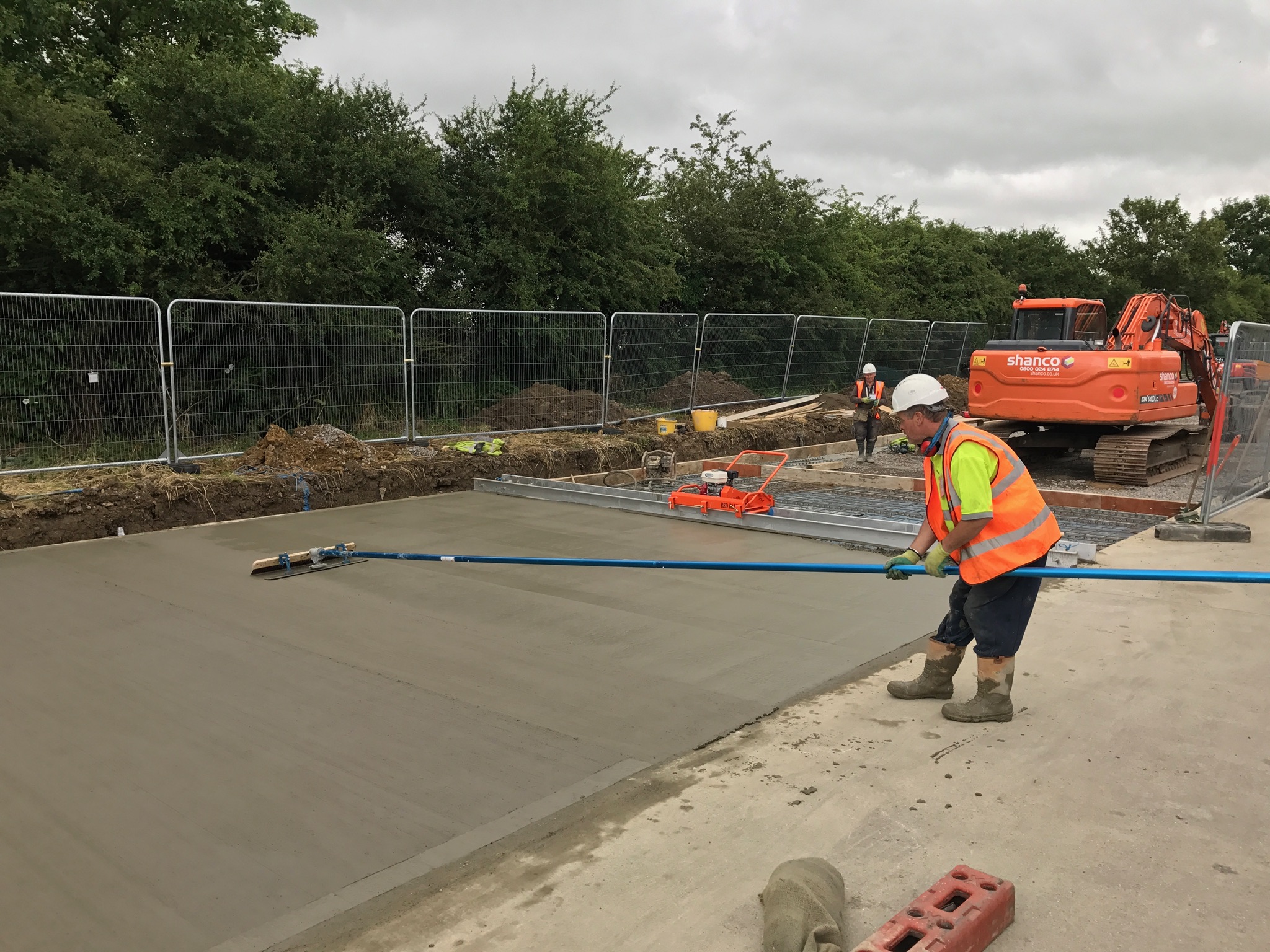Reducing groundworks costs is about much more than haggling on the price of materials.
In fact, the majority of overspend in a project involving groundworks, usually comes from 6 factors that have nothing to do with material price. And if mis-managed, can cause delays, increased costs and safety issues.
Here we delve into these 6 cost saving factors and explain exactly what can be done to reduce costs.
1. Collect data on site and ground conditions.
OK, but what sort of data?
Conducting thorough surveys, soil testing, and geotechnical assessments can provide valuable insights into potential challenges, risks and opportunities.
By understanding the site’s characteristics upfront, you can tailor your approach and minimise unforeseen costs associated with unexpected ground conditions.
Without conducting thorough surveys, soil testing, and geotechnical assessments, you risk encountering unforeseen challenges and costs due to unexpected ground conditions.
Understanding the site’s characteristics upfront allows you to adapt your approach and mitigate these potential expenses.
2. Don’t skimp on design.
Investing in a detailed design is essential for keeping groundworks costs under control.
So how does spending more time and money on design help to reduce groundworks costs?
Well, a detailed and precise design not only helps reduce the duration of your project, it also minimises the likelihood of errors and rework, which can significantly inflate costs.
By collaborating with an experienced Structural/Civil engineer and your groundworks contractor, you can develop a design that gives you the most efficient, cost effective groundworks solution.
3. Crystal clear scope of works
Clarity on the scope of groundworks is fundamental to cost management.
Thorough Definition
Begin by clearly defining all groundworks-related tasks right from the project’s inception. This includes not only the primary excavation and foundation work but also ancillary tasks such as drainage installation, utility connections, and landscaping considerations. By articulating these tasks in detail, you establish a solid foundation for project planning and cost estimation.
Consider Construction Phases
Take into account the various phases of construction when outlining the scope of works. Anticipate the sequence of activities and the specific groundworks requirements associated with each phase. For example, during the initial stages, focus may be on site preparation and excavation, while later phases may involve concrete pouring, backfilling, and surface finishing. By aligning the scope of works with the project timeline, you can ensure a cohesive and efficient construction process.
Identify Associated Works
Beyond the core groundworks, identify any ancillary works that are essential for the project’s success. This may include the construction of access roads to facilitate site entry and egress, the installation of temporary working platforms for equipment manoeuvring, and the provision of storage areas for materials and equipment. Additionally, consider welfare facilities for site personnel, such as rest areas and sanitation facilities. By addressing these associated works upfront, you can avoid disruptions and delays during the construction process.
Regular Review and Adjustment
The scope of works is not set in stone; it should be reviewed and adjusted as needed throughout the project lifecycle. Factors such as changes in project requirements, unforeseen site conditions, and evolving stakeholder expectations may necessitate modifications to the scope. Regularly revisit the scope of works, assess its alignment with project objectives, and make necessary adjustments to mitigate the risk of cost overruns and schedule delays.
4. One central programme of works
This could easily be the point with the most potential to reduce groundworks costs, if not managed correctly.
A well-defined schedule outlines the sequence of activities and critical milestones, allowing for better resource allocation and coordination with other trades.
By following a structured programme and recording progress through regular coordination meetings, you can minimise downtime, optimise productivity, and identify potential bottlenecks or delays early on, thus mitigating cost increases.
A comprehensive programme of works should contain:
Activity Sequence
Outline the sequence of groundworks activities from start to finish. This includes tasks such as site preparation, excavation, foundation construction, drainage installation, and surface finishing.
Duration Estimates
Provide estimates for the duration of each activity based on factors such as site size, complexity, and resource availability. Consider dependencies between tasks and allocate appropriate time buffers to account for potential delays.
Critical Milestones
Identify critical milestones that mark key stages of the groundworks process, such as completion of excavation, foundation pouring, and backfilling. These milestones serve as checkpoints for progress tracking and help maintain project momentum.
Resource Allocation
Specify the resources required for each activity, including personnel, equipment, and materials. Ensure that resources are allocated optimally to maximise productivity and minimise downtime.
Coordination with Other Trades
Coordinate groundworks activities with other trades involved in the construction project, such as building contractors, utilities contractors, and landscaping teams. Establish clear communication channels and schedule integration points to facilitate seamless collaboration.
Risk Management
Identify potential risks and mitigation strategies associated with groundworks activities. This may include adverse weather conditions, unforeseen site conditions, and supply chain disruptions. Develop contingency plans to address these risks and minimise their impact on project progress.
Progress Monitoring
Implement mechanisms for monitoring and tracking progress throughout the groundworks programme. This may involve regular site inspections, progress reports, and milestone reviews. Use tools such as Gantt charts or project management software to visualise progress and identify areas needing attention.
Quality Assurance
Define quality standards and inspection criteria for groundworks activities. Establish procedures for quality control checks and ensure compliance with relevant regulations and specifications.
5. Get the logistics right
To ensure efficient logistics for groundworks, several steps can be taken:
Site Analysis
Conduct a thorough analysis of the site layout, access points, and traffic routes. Identify any bottlenecks or obstacles that may hinder the movement of materials and equipment.
Just-In-Time Delivery
Implement a Just-In-Time (JIT) delivery system to minimise storage requirements and transportation costs. Coordinate deliveries to coincide with the specific needs of the project, reducing inventory holding costs and the risk of material wastage.
Centralised Material Storage
Establish a centralised material storage area near the construction site. This reduces the need for multiple storage locations, streamlines inventory management, and facilitates easy access to materials when needed.
Optimised Transportation
Optimise transportation routes to minimise travel time and fuel consumption. Use GPS technology and route planning software to identify the most efficient routes, taking into account factors such as traffic congestion and road conditions.
Coordination with Suppliers
Maintain open communication with suppliers to ensure timely delivery of materials and equipment. Provide them with accurate project schedules and requirements to facilitate efficient logistics planning.
On-Site Congestion Management
Implement measures to reduce on-site congestion, such as designated loading and unloading zones, traffic management systems, and clear signage. This improves safety and productivity on the construction site.
Training and Education
Provide training to staff and subcontractors on efficient logistics practices and safety procedures. Empower them to identify and address logistical challenges proactively, reducing the likelihood of delays and cost overruns.
By implementing these strategies, construction projects can optimise logistical operations, minimise groundworks costs, and enhance overall efficiency during groundworks projects.
6. Choose your contractor wisely
Choose the right groundworks contractor and engage with them as early as possible in the project, ideally several months before your project start date.
They will assist and support you with all aspects of your project including cost planning, programming, design input, health and safety management, liaising with local councils and authorities and help coordinate their works with other trades.
A good groundworks contractor will be diligent about all of the above points and guide you through each phase, with the clarity and care that the project demands.
Summary of ways to reduce groundworks costs
In summary, thorough planning, a detailed design and a pro-active professional groundworks contractor working to a clearly defined programme will help keep the your groundworks costs down to a minimum.




